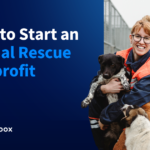How to Socialize a Rescue Dog with Other Pets
Socializing a rescue dog with other pets is an essential step to ensure harmony in your home. Many rescue dogs carry past traumas or anxieties, making proper socialization key to their well-being. With the right approach, you can help your new companion build confidence and form healthy relationships with other animals.
Start Slowly and Patiently
The journey of socializing your rescue dog begins with patience. A gradual approach allows them to acclimate to their new surroundings and companions without feeling overwhelmed.
Create a Safe Environment
Before introducing your dog to other pets, set up a designated safe space where they can retreat when feeling stressed.
- Equip the space with:
- Comfortable bedding.
- Familiar toys.
- A bowl of fresh water.
- Choose a low-traffic area in your home to minimize distractions.
“A safe environment helps your rescue dog feel secure as they begin to adapt to their new life.”
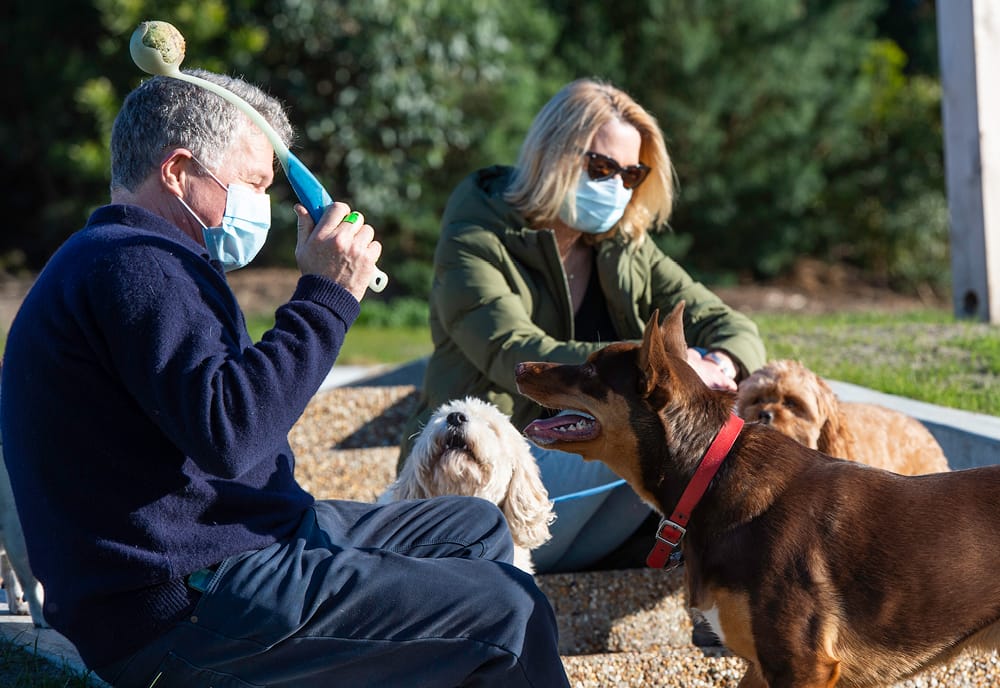
For premium-quality pet bedding and toys, check out Found My Animal. Use discount code: mytopdeals10 to save on your purchase.
Gradual Introductions
Introducing your rescue dog to other pets should be done step by step.
- Begin with visual introductions at a safe distance. Allow both animals to see each other without direct interaction.
- Use leashes for control and safety during initial meetings.
- Progress to short, supervised interactions in neutral spaces.
“Gradual introductions reduce stress and build trust between your rescue dog and other pets.”
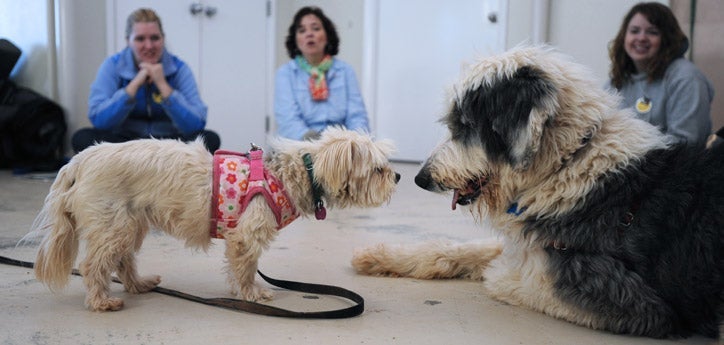
Use Positive Reinforcement
Positive reinforcement is a powerful tool to encourage calm and desired behaviors in your rescue dog.
Reward Good Behavior
Every time your rescue dog exhibits calm behavior around other pets, reward them with:
- High-value treats.
- Verbal praise, such as “Good job!”
- A gentle pat to reinforce trust.
This creates positive associations with social interactions, helping your dog feel more confident.
Encourage Calmness
If your dog remains composed during introductions, reward them immediately to reinforce their behavior.
- Keep treats on hand to reward calm responses consistently.
- Use a soothing tone of voice to further encourage relaxation.
“Positive reinforcement helps your rescue dog understand that good behavior leads to positive outcomes.”
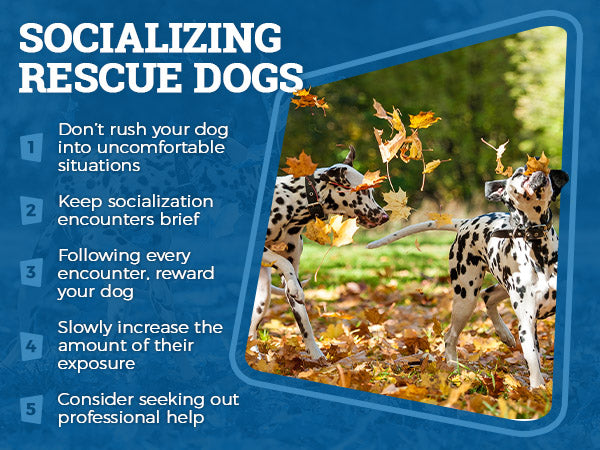
Find Suitable Socialization Opportunities
Once your rescue dog is comfortable at home, gradually introduce them to outside environments and new experiences.
Dog Parks and Daycares
Supervised settings like dog parks or doggie daycares can provide valuable socialization opportunities.
- Choose quiet parks for their first outings to avoid overstimulation.
- Observe your dog’s interactions with other animals to ensure they’re positive.
Controlled Playdates
Arrange playdates with calm, friendly dogs owned by friends or family.
- Begin with parallel walks to let the dogs get used to each other’s presence.
- Gradually allow off-leash interactions in a controlled and fenced environment.
“Structured socialization opportunities provide your dog with safe ways to build confidence and trust.”

Stay tuned for the second half of this article, where we’ll explore tips for monitoring your dog’s body language, when to seek professional help, and how to maintain consistent socialization efforts.
Meanwhile, equip your dog with durable and stylish leashes and collars from Found My Animal. Don’t forget to use discount code: mytopdeals10 for exclusive savings!
For more detailed tips and trusted product reviews, visit MyTopDeals10.com. Together, we can help rescue dogs thrive in their new homes!
Monitor Body Language
Understanding your rescue dog’s body language is crucial during socialization. It helps you recognize when they’re comfortable and when they need more time to adjust.
Watch for Signs of Stress
Stress signals can vary, but common signs include:
- Tucking their tail or lowering their body.
- Cowering, growling, or excessive barking.
- Licking their lips, yawning, or pacing.
If you notice these signs:
- Take a step back and allow your dog to decompress.
- Return to a distance where they feel secure and restart the interaction more gradually.
“Paying attention to your dog’s body language ensures their safety and fosters trust during socialization.”
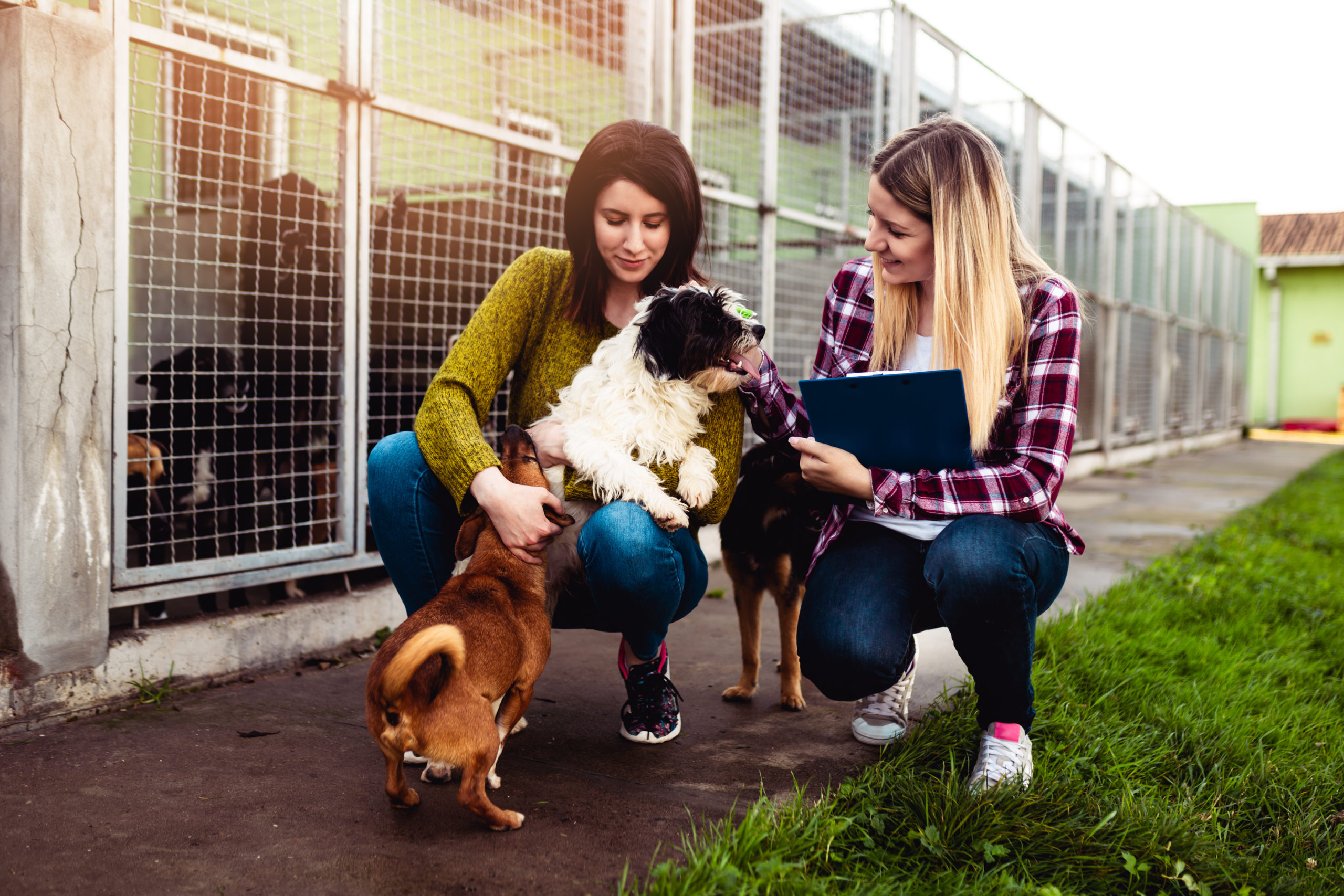
Adjust Interactions Accordingly
Every dog is unique, and their socialization journey should be tailored to their comfort level.
- If your dog shows signs of discomfort, slow the process down.
- Increase the time and exposure to other pets gradually.
“Tailoring interactions to your dog’s pace makes socialization a more positive experience for everyone involved.”
Consider Professional Help
If socialization challenges persist or escalate, professional assistance can make a significant difference.
Training Classes
Group training sessions or private lessons with a professional dog trainer can provide:
- Structured environments for your dog to interact with others.
- Guidance tailored to your dog’s specific needs and behavior.
Look for trainers who specialize in rescue dog socialization to address trauma or anxiety effectively.
Behavioral Support
For more complex issues, consult a certified canine behaviorist.
- They can create a personalized plan to help your dog overcome fears or aggression.
- Behavioral therapy ensures that your dog’s emotional well-being is prioritized during the process.
“Professional help equips you and your dog with the tools to navigate socialization challenges successfully.”
Consistency is Key
Socializing your rescue dog isn’t a one-time event—it’s an ongoing process. Regular practice and positivity will yield the best results.
Regular Exposure
Incorporate socialization into your dog’s daily routine:
- Take short walks in new environments.
- Gradually introduce them to different people and pets.
- Rotate their exposure to a variety of settings, from parks to quieter neighborhoods.
Stay Positive
Your attitude can greatly influence your dog’s behavior.
- Celebrate small victories during socialization.
- Use a calm, reassuring tone when guiding your dog through new experiences.
“Patience and positivity go a long way in building your rescue dog’s confidence and trust.”

FAQs
Q1: How long does it take for a rescue dog to socialize with other pets?
Every dog is different, but most require several weeks to months of gradual exposure and positive reinforcement.
Q2: What should I do if my rescue dog is aggressive toward other pets?
Start by seeking help from a professional dog trainer or behaviorist who specializes in aggression management.
Q3: Can all rescue dogs be socialized?
Most rescue dogs can be socialized with the right approach, patience, and professional support when needed.
Q4: How do I ensure my rescue dog feels comfortable during socialization?
Focus on creating a safe space, using positive reinforcement, and paying close attention to their body language.
Conclusion
Socializing a rescue dog with other pets is a rewarding journey that requires time, patience, and understanding. By creating a safe environment, using positive reinforcement, and tailoring the process to your dog’s comfort level, you can help them thrive in their new home.
Start today! Equip your rescue dog with high-quality leashes, collars, and other accessories from Found My Animal. Use discount code: mytopdeals10 for exclusive savings while supporting a brand that gives back to animal welfare.
For more tips, product reviews, and exclusive deals, visit MyTopDeals10.com. Together, we can help every rescue dog feel safe, loved, and ready for their forever home.


